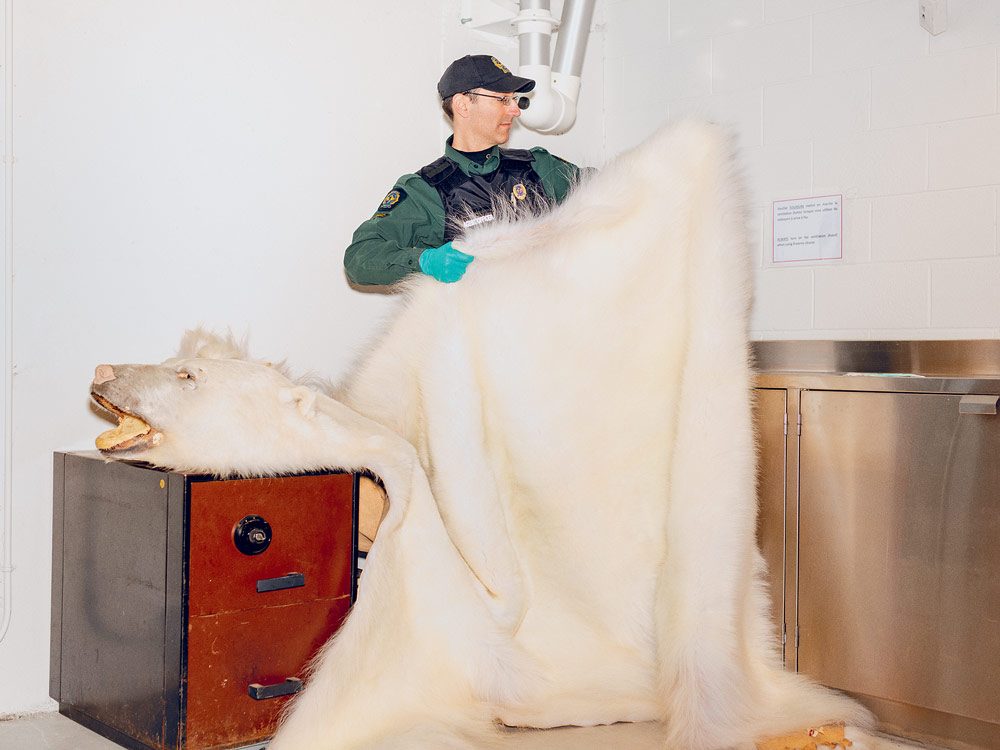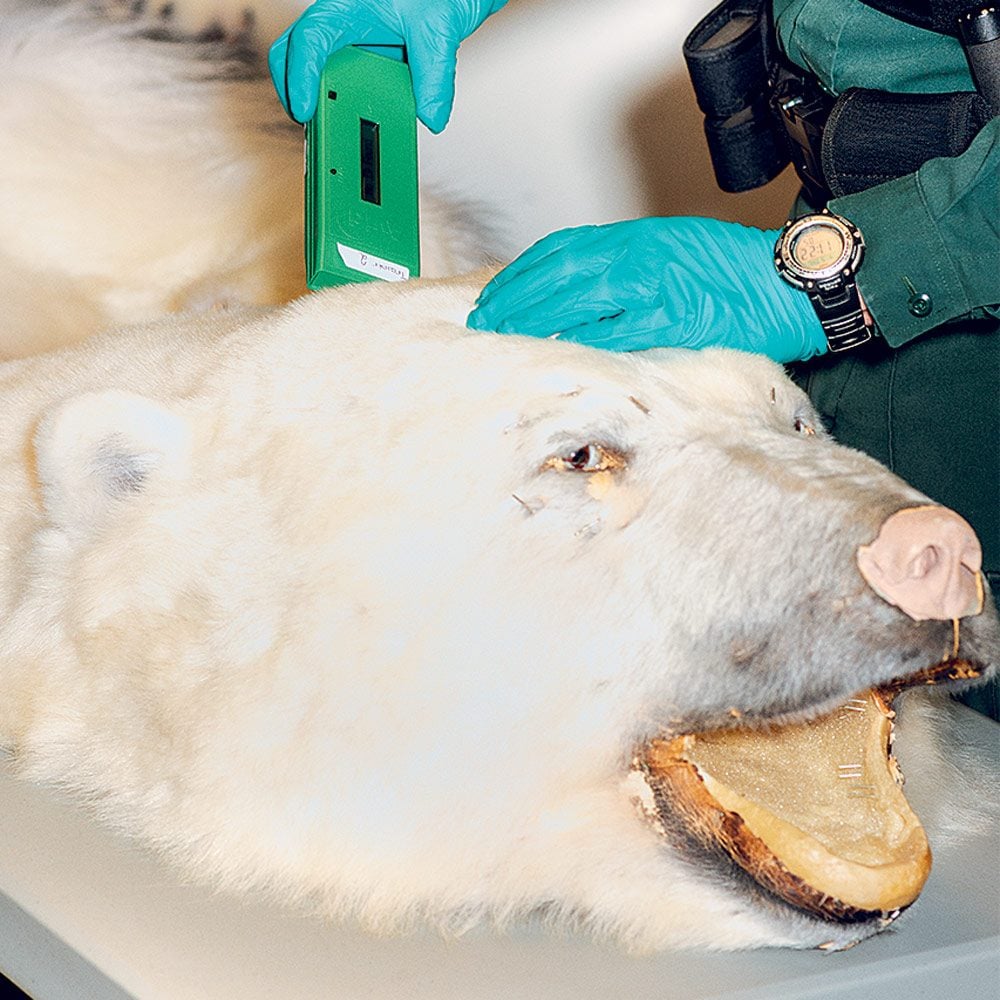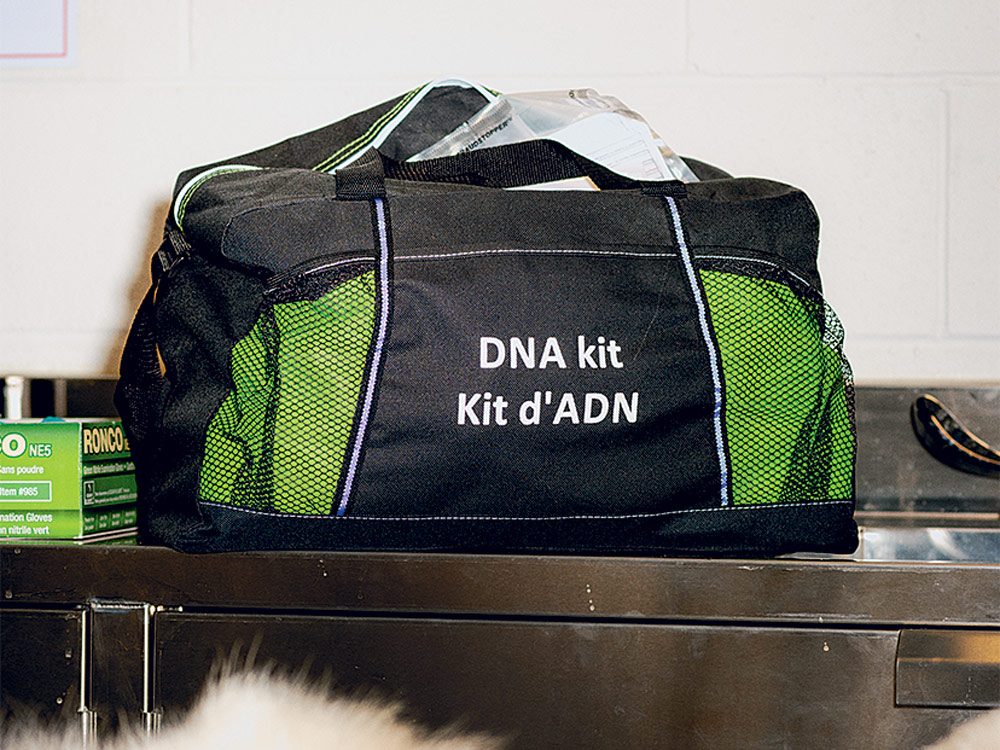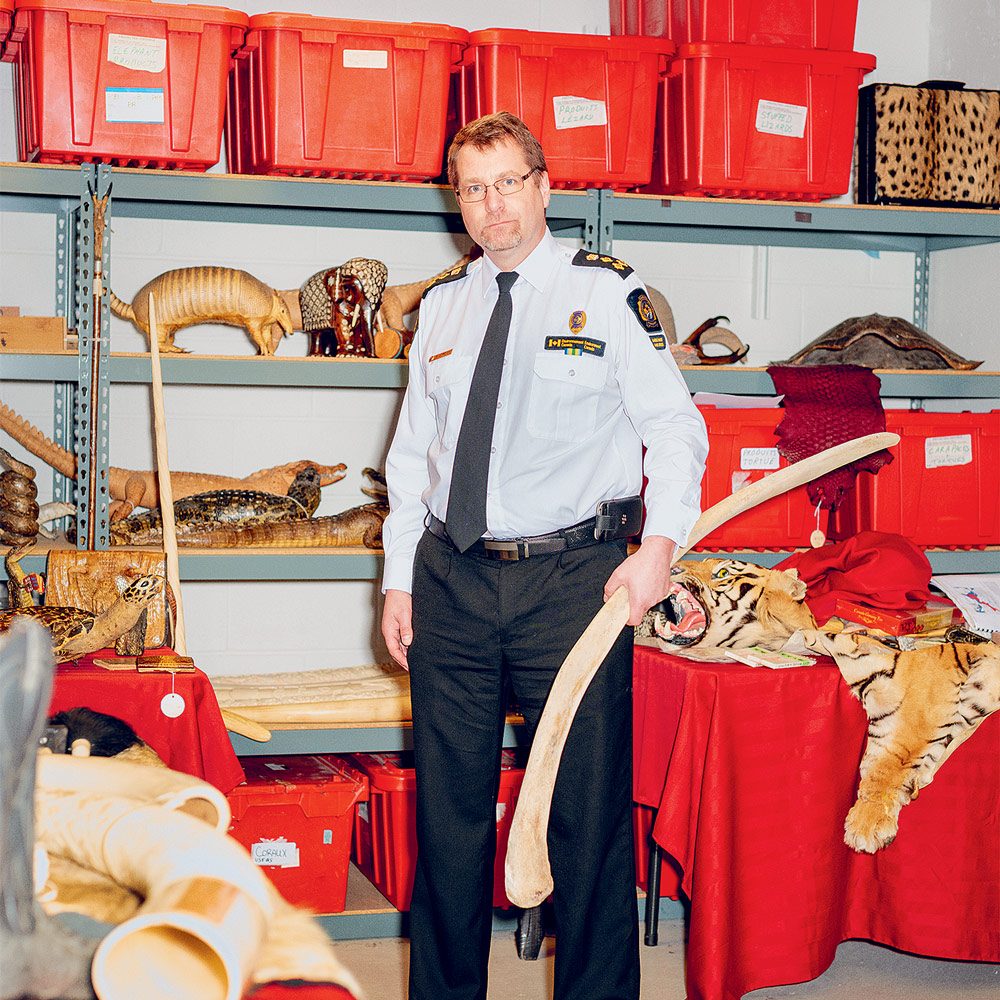
Wildlife crime worldwide could be a US $30 billion industry
Six years ago, on a slow and lazy Easter Sunday, there wasn’t much going on in the environmental crime unit office in Winnipeg. When the phone rang, it was Richard Labossiere’s boss, calling to relay a tip from a confidential informant in the Arctic. A private jet of Mexican sport hunters had just taken off from Iqaluit, and the informant thought the group might have some contraband polar bear pelts on board. They’d likely be stopping in Winnipeg in two hours to refuel.
Labossiere rounded up two other officers and gear and hopped in the car for the half-hour drive to the airport. He, his colleagues and a few border guards made it onto the tarmac just as the plane touched down.
They waited until the passengers—a father, two sons and a godson, plus two pilots—filed off the plane and into the terminal’s waiting area. Then they burst in on the hunters, opening the door, announcing who they were and beginning their search. It wasn’t hard: the average adult male polar bear weighs 545 kilograms and, standing on its hind legs, can reach more than three metres tall. Paw-to-paw, pelts can measure two and a half metres across.
According to Labossiere, they found three stuffed in duffle bags, along with two polar bear skulls and three plastic tubes holding narwhal tusks. The family had no permits to take any of the contraband out of the territory, let alone across the continent. (It’s illegal to import marine mammals and their body parts into Mexico anyway.)
Labossiere and the other officers detained the group, and one of the sons and the godson spent the week in jail. The tourists were charged $80,000 in fines, which they paid in cash.
“Our problem wasn’t with poaching; it was with trafficking,” says Sheldon Jordan, a former intelligence officer who runs Canada’s wildlife crime directorate and, up until 2017, chaired the Wildlife Crime Working Group at Interpol, the organization that facilitates international police cooperation.
Interpol estimates that wildlife crime worldwide—which includes poaching and trafficking to serve a growing black market for animal goods—could be a US$30 billion industry, driven in part by multinational crime syndicates. Over the last 10 years, these illegal acts have become the fourth-highest-grossing crime in the world, behind the narcotics trade, counterfeiting and human trafficking.
Much like those crimes, because wildlife crime is not bound by national borders and each country has its own rules, its management and policing has become unwieldy at best. With the proper permits, hunting polar bears isn’t illegal in Canada, but officials like Jordan are in desperate need of a way to track pelts as they move out of the Arctic, so they can catch traffickers and distinguish between which pelts are traded lawfully and which are not.

Canada and the U.S. have disagreed over how to manage polar bears
The World Wildlife Federation estimates there are anywhere from 22,000 to 31,000 polar bears worldwide. But Canada is home to at least three quarters of them and wants its northern communities to benefit from the $5,000-per-pelt price the market allows. (That number spiked as high as $25,000 in recent years but seems to have settled back down.)
The U.S., on the other hand, has long opposed commercial trade in polar bears, believing it should be shut down completely. In 2008, the country banned polar bear imports outright and then, two years later, proposed stopping all global polar bear trade. The U.S. raised the idea again in 2013 but dropped its official opposition in 2016, refocusing on climate change as a threat to the species. However, the U.S. Fish and Wildlife Service said at the time that it “remains concerned about the commercial use of polar bear hides as an additional threat to the species.”
Even though American efforts were unsuccessful, they did force Canada to look closely at its management tactics to offer a strong enough defense.
“‘Let’s not let a good crisis go to waste’ was our attitude,” Jordan says. Canada needed a way to show that its polar bears weren’t being poached and that their pelts weren’t being smuggled across its borders. But how do you prove a negative?
After the 2010 proposed global ban and the 2013 Winnipeg bust, Labossiere took the three pelts his team had seized and began to test a tagging method, called Passive Integrated Transponder (or PIT) tags, that he thought might work to help him and his team track the movements of pelts across the globe, and prove to the U.S. that Canada could manage its polar bear hunt.
The tags—tiny microchips that can be coded with 35 billion possible sequences—weren’t new additions to the wildlife crime prevention arsenal. They’d been used to monitor a few other species worldwide, including bighorn sheep in Alberta and arowana, or dragon fish, in Indonesia and Malaysia. So why, Labossiere reasoned, couldn’t they work to track Canada’s polar bear pelts?
After consulting with hunters and taxidermists, Labossiere peppered the three pelts with tags. He then sent them off for fleshing—scraping all the fat and muscle away with a blade—and tanning, a chemical process that renders a hide softer and more pliable.
Labossiere won’t say where he placed the tags, which are no bigger than a grain of rice, or the final locale chosen, but the tags survived every stage of rigorous processing. How often a pelt is checked for a chip once it hits the market is also a secret, as are the tools used to scan the pelts later.

A two-party strategy
However, the tag strategy only works if local communities agree to participate, so in November 2014, Labossiere flew up to a speck of a town called Clyde River (population 1,053) on the shores of Baffin Island. The federal government needed the community’s support to launch the pilot project.
Through a translator, he tried to explain why the government wanted access to the dozen pelts stacked in the hunters and trappers’ association office, and to all the bears they’d hunt in the future too. The eight elders who sat across from him showed little emotion. Says Labossiere, “At one point, one of them approached me and said, ‘You can stop already.’” Labossiere thought he was dead in the water, but to his surprise, the elder told him the group would give him the pelts.
The two parties worked out an agreement: when someone made a kill, they had to report it to the conservation officer in town, who would then tag the pelt. The officer would also be responsible for taking a DNA sample, essentially a serial number for the bear, and sending it south to a federal laboratory for storage. The program has since been implemented in a half-dozen communities across the Canadian north.
Ideally, the tag system will operate in every Arctic community, and eventually every pelt taken legally will get a tag. “Let’s project ourselves 10 years into the future,” Jordan says. “All the new pelts are being PIT tagged and we’ve made it harder for illegal pelts to get into the trade chain.” Being able to track polar bear hides means that there is little conceivable need to ban the trade in polar bear parts.
If an officer encounters a pelt without a tag, and the owner says it was bought before the program, authorities can do a (more expensive, more intrusive, less efficient) carbon-dating test to determine if they’re telling the truth. If the pelt turns out to be older than the PIT tag program, then it could be legal, but if not, the authorities would have proof that it was traded illegally.
So far, Jordan says, anecdotal evidence suggests that the program is working: authorities can’t necessarily bust people yet because they’ve just started putting the tags in, but he says that they’ve already seen fewer problem cases this year than before, suggesting the tags are, at the very least, acting as a deterrent.

It’s not just polar bears that stand to benefit from the PIT tags
University of Washington scientist Sam Wasser has made it his life’s mission to use DNA in ivory tusks to track where an elephant was killed. His career has consisted, in part, of studying piles of elephant dung in Africa to map the animals’ genetics across the continent. His lab has developed DNA methods that can track any elephant tusk to within 300 kilometres—and often to the exact protected area—of where the animal was killed. For Interpol, the technique has revealed a clear picture of numerous wildlife crime syndicates and their patterns of poaching and trafficking ivory.
Jordan believes forensic tracing technology like the tiny PIT tags could bust open these crime syndicates even further, revealing where they’re getting their illegal prey by scanning seized elephant parts with a hand-held wand, or tracking which herds are disappearing and identifying where new material is turning up. “Looking at 30,000 or 40,000 tusks, Wasser has been able to identify a number of major gangs coming out of Africa, just through the patterns of DNA analysis,” Jordan says.
Implementing a program like the one operating in the high Arctic could bolster the already extensive DNA bank Wasser has created and help to save the 415,000 African elephants left in the world from poachers.
Until a better system emerges, Jordan will continue to expand polar bear tagging and cracking down on the trophy hunters and taxidermists largely responsible for illegally smuggling pelts out of the country. “We’re using intelligence, targeted inspections—we’ve been able to prevent a lot of crime from happening,” Jordan says. “This is science saying ‘You should look here’ and informing intelligence. It’s amazing.”
Next, learn about the wildlife veterinarians saving mountain gorillas in Central Africa.